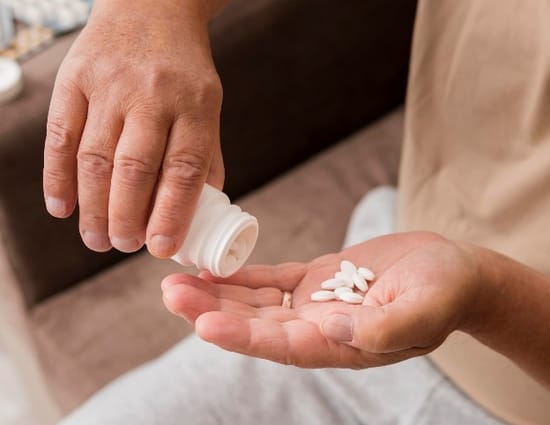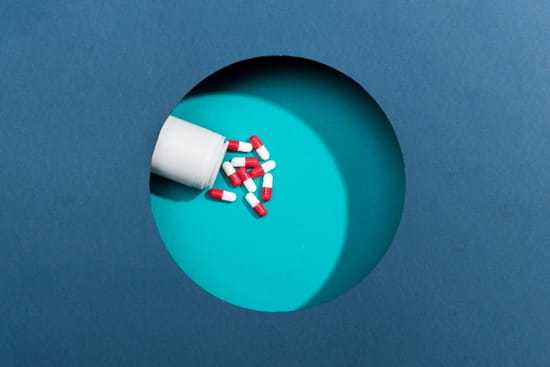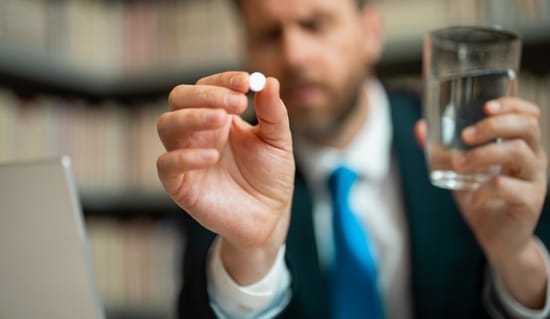Opioid addiction is a pressing global health crisis, affecting millions of individuals and communities across the world. This epidemic, marked by an alarming rise in the misuse of prescription pain relievers, heroin, and synthetic opioids such as fentanyl, has not only led to a significant increase in opioid-related overdoses but also brought to light various long-term health issues associated with opioid misuse. Among these, one of the less discussed but profoundly impactful consequences is its effect on hormone levels, particularly testosterone, in men.
Testosterone, a vital hormone in men, plays a crucial role in maintaining muscle mass, bone density, red blood cell production, and overall sexual health. It also significantly influences mood and energy levels. However, prolonged opioid use has been scientifically linked to disruptions in the body's natural hormone production, leading to a condition known as opioid-induced hypogonadism (OIH). This condition not only diminishes the quality of life but also poses serious health risks if left unaddressed.
The purpose of this article is twofold. Firstly, it aims to shed light on the intricate relationship between opioid addiction and testosterone levels, providing a comprehensive overview of how opioids impact the endocrine system and lead to decreased testosterone production. Understanding this connection is crucial for individuals who have struggled with opioid addiction and are now facing the aftermath of hormonal imbalance. Secondly, the article serves as a resourceful guide for men who have experienced opioid addiction and are now considering treatment options for their diminished testosterone levels. By answering the top 10 questions asked about opioids and testosterone, this piece seeks to empower former opioid users with the knowledge they need to make informed decisions about their health and recovery journey.
The impact of opioid addiction on testosterone levels is more than just a biochemical alteration; it's a change that can deeply affect an individual's physical, emotional, and psychological well-being. Symptoms of low testosterone, such as decreased libido, fatigue, weight gain, loss of muscle strength, and mood disturbances, can significantly impair one's quality of life. Moreover, low testosterone levels are associated with serious long-term health risks, including osteoporosis, cardiovascular diseases, and metabolic syndrome. Therefore, understanding and addressing the effects of opioid addiction on testosterone is not just about improving quality of life; it's also about preventing potentially life-threatening health issues.
As we delve into the complexities of how opioid addiction affects testosterone levels, it's important to approach the topic with empathy and a deep understanding of the challenges faced by those who have been ensnared in the grip of addiction. The journey from addiction to recovery is fraught with numerous obstacles, and the added burden of dealing with hormonal imbalances can make it even more daunting. However, with the right information and support, recovery and hormonal balance can be achieved.
This article is designed to serve as a beacon of hope and a source of valuable information for men who have conquered opioid addiction and are now on the path to reclaiming their health. By exploring the effects of opioids on testosterone, discussing treatment options, and answering the most pressing questions, this piece aims to guide former opioid users through their recovery journey, helping them understand their condition and explore viable solutions to restore their hormonal health and overall well-being.
The Link Between Opioid Use and Testosterone Levels
The connection between opioid use and the suppression of testosterone levels in men is a critical aspect of understanding the broader impacts of opioid addiction on health. Opioids, while effective for managing pain, interact with the brain and body in ways that extend beyond pain relief, influencing various physiological processes, including hormone production. This section delves into the mechanisms by which opioids affect testosterone levels, the implications of these changes, and the significance of this knowledge for individuals recovering from opioid addiction.
Mechanisms of Opioid Impact on Testosterone

Opioids exert their pain-relieving effects by binding to specific receptors in the brain, spinal cord, and other parts of the body. These receptors are part of the broader endogenous opioid system, which plays a role in not just pain modulation but also in regulating stress responses, emotional states, and—crucially—hormone secretion. When opioids bind to these receptors, they alter the normal functioning of this system, leading to a decrease in the production of several hormones, including testosterone.
Testosterone production is regulated by a complex feedback loop involving the hypothalamus, pituitary gland, and testes, often referred to as the hypothalamic-pituitary-gonadal (HPG) axis. The hypothalamus releases gonadotropin-releasing hormone (GnRH), which signals the pituitary gland to produce luteinizing hormone (LH) and follicle-stimulating hormone (FSH). LH then stimulates the testes to produce testosterone. Opioids disrupt this process by inhibiting the release of GnRH from the hypothalamus, leading to decreased production of LH and FSH by the pituitary gland, ultimately resulting in lower testosterone levels, a condition known as opioid-induced androgen deficiency (OPIAD).
Implications of Reduced Testosterone Levels
The implications of reduced testosterone levels due to opioid use are profound and multifaceted. Testosterone plays a key role in maintaining muscle mass and strength, bone density, fat distribution, red blood cell production, and sex drive. It also significantly impacts mood and cognitive function. Consequently, a decrease in testosterone can lead to a range of physical and psychological symptoms, including decreased libido, erectile dysfunction, fatigue, loss of muscle mass, increased body fat, osteoporosis, mood swings, and depression. These symptoms can severely impact an individual's quality of life and may complicate the recovery process for those with a history of opioid addiction.
Understanding the link between opioid use and decreased testosterone levels is crucial for individuals in recovery, as it sheds light on potential challenges they may face and informs the approach to treatment and management. Recognizing the symptoms of low testosterone can prompt individuals to seek medical evaluation and intervention, potentially mitigating the long-term health consequences associated with hormone deficiency.
Significance for Recovering Individuals
For men recovering from opioid addiction, grasping the connection between their past opioid use and current symptoms of low testosterone can be a revelation, offering an explanation for experiences that may have previously seemed unrelated to their addiction history. This understanding is a vital step towards holistic recovery, underscoring the importance of comprehensive healthcare that addresses not only the psychological aspects of addiction but also its physical aftermath.
Armed with this knowledge, individuals are better positioned to advocate for their health, seeking out medical advice and interventions that can address low testosterone levels. Treatment options may include lifestyle changes, such as diet and exercise modifications, medications to stimulate testosterone production, or hormone replacement therapy, depending on the severity of the deficiency and the individual's overall health profile.
The link between opioid use and testosterone levels is a critical piece of the puzzle for individuals recovering from opioid addiction. By understanding how opioids impact the body's hormone production, men can take informed steps towards addressing the physical and psychological symptoms associated with low testosterone, ultimately supporting their recovery and improving their quality of life.
Understanding Opioid-Induced Hypogonadism (OIH)
Opioid-Induced Hypogonadism (OIH) represents a significant yet often overlooked consequence of long-term opioid therapy or misuse. Characterized by reduced gonadal function and decreased testosterone production, OIH is a direct result of opioid interactions with the body's endocrine system. This condition not only undermines the physical and psychological well-being of individuals but also poses a challenge for recovery and rehabilitation in those with a history of opioid addiction. Understanding OIH is crucial for addressing its symptoms and mitigating its impacts effectively.
Definition and Overview
OIH is defined as a functional disorder where the use of opioids negatively affects the normal production of sex hormones, including testosterone, leading to a spectrum of symptoms associated with low hormone levels. This condition is part of the broader category of opioid-induced endocrinopathy, which may also affect other hormonal axes, but OIH is among the most common and clinically significant due to the pivotal role of testosterone in men's health.
Mechanisms Behind OIH
The pathophysiology of OIH involves opioids' suppression of the hypothalamic-pituitary-gonadal (HPG) axis. Normally, the hypothalamus releases gonadotropin-releasing hormone (GnRH), which stimulates the pituitary gland to secrete luteinizing hormone (LH) and follicle-stimulating hormone (FSH). These hormones, in turn, signal the testes to produce testosterone. Opioids interfere with this process primarily by inhibiting the release of GnRH, leading to reduced secretion of LH and FSH, decreased stimulation of the testes, and ultimately lower testosterone levels. This disruption reflects opioids' profound impact on the central nervous system, extending beyond their analgesic properties to influence a range of physiological functions, including hormonal regulation.
Prevalence and Risk Factors
The prevalence of OIH varies among studies, largely due to differences in the types of opioids used, dosage, duration of treatment, and individual patient factors. However, evidence suggests that a significant proportion of men using opioids for chronic pain management or experiencing opioid use disorder may develop OIH. Risk factors for OIH include the potency of the opioid medication, the duration of opioid use, and individual susceptibility, which may be influenced by genetics, age, and overall health status.
Symptoms and Diagnosis
Symptoms of OIH largely mirror those associated with low testosterone, including but not limited to decreased libido, erectile dysfunction, fatigue, loss of muscle mass, increased body fat, mood swings, and cognitive difficulties. These symptoms can significantly impair an individual's quality of life, affecting physical health, emotional well-being, and social functioning.
Diagnosing OIH requires a comprehensive clinical assessment, including a detailed medical history, physical examination, and laboratory tests to measure hormone levels. Blood tests specifically measure serum testosterone, LH, and FSH levels, helping distinguish OIH from other causes of hypogonadism and guiding appropriate treatment.
Treatment and Management
The management of OIH aims to alleviate symptoms, improve quality of life, and restore hormonal balance. Treatment strategies may include:
- Opioid Management: Evaluating the necessity of ongoing opioid therapy, considering opioid tapering or switching to non-opioid pain management strategies to reduce the impact on the HPG axis.
- Hormone Replacement Therapy (HRT): Administering testosterone replacement therapy to men with clinically significant symptoms and confirmed low testosterone levels, following a careful evaluation of potential risks and benefits.
- Lifestyle Modifications: Encouraging healthy lifestyle choices, such as regular exercise, a balanced diet, and adequate sleep, which can naturally enhance testosterone production and overall health.
- Monitoring and Follow-Up: Regular monitoring of hormone levels and symptom improvement is essential to adjust treatment plans as needed and ensure optimal outcomes.
Addressing OIH is a crucial step for individuals recovering from opioid addiction. By comprehensively understanding and managing this condition, men can significantly improve their recovery journey, enhancing both their physical health and emotional well-being.
Health Implications of Low Testosterone Due to Opioid Addiction

Low testosterone, a common sequel of opioid addiction and opioid-induced hypogonadism (OIH), has widespread health implications that affect not only the physical but also the emotional and psychological well-being of individuals. Understanding the multifaceted impacts of low testosterone is critical for those recovering from opioid addiction, as it underscores the importance of addressing this condition to improve overall health and quality of life. This section explores the various health implications associated with low testosterone due to opioid addiction, highlighting the importance of early identification and management.
Physical Health Consequences
Muscle Mass and Strength: Testosterone plays a pivotal role in maintaining muscle mass and strength. Low levels can lead to muscle atrophy and weakness, which not only affects physical appearance and self-esteem but also compromises physical functionality and resilience.
Bone Density: Testosterone is crucial for bone health, stimulating bone formation and helping to maintain bone density. A deficiency in testosterone increases the risk of osteoporosis and bone fractures, which can significantly impact an individual's mobility and independence.
Fat Distribution and Obesity: Low testosterone levels are associated with increased body fat, particularly in the abdominal area, and a higher risk of obesity. This altered fat distribution pattern can lead to metabolic issues, such as insulin resistance and increased risk of type 2 diabetes.
Cardiovascular Health: Testosterone has a protective role in cardiovascular health, influencing lipid metabolism and endothelial function. Low testosterone levels are linked to an increased risk of cardiovascular diseases, including coronary artery disease and stroke.
Anemia: Testosterone stimulates erythropoiesis, or red blood cell production. A deficiency can lead to anemia, characterized by fatigue, weakness, and decreased oxygen-carrying capacity of the blood, further exacerbating the feeling of fatigue and lethargy.
Emotional and Psychological Impact
Mood Disorders: The relationship between testosterone and mood is complex, with low levels contributing to mood swings, irritability, and an increased risk of depression and anxiety. This emotional instability can challenge recovery efforts, complicating the path to emotional and psychological well-being.
Cognitive Function: Emerging research suggests that testosterone has a role in cognitive functions, including memory and concentration. Low testosterone levels may be linked to cognitive decline, reduced concentration, and difficulties in memory, affecting personal and professional life.
Sexual Health and Relationships: Testosterone is key to sexual desire and function. Low levels can result in reduced libido, erectile dysfunction, and diminished sexual satisfaction, which can strain intimate relationships and affect overall quality of life.
Addressing the Health Implications

Recognizing and addressing the health implications of low testosterone is essential for individuals recovering from opioid addiction. Comprehensive management includes hormone replacement therapy (HRT) and testosterone replacement therapy (TRT) when appropriate, lifestyle modifications such as diet and exercise, and psychological support to address mood disorders and cognitive issues. Moreover, regular monitoring and follow-up care with healthcare professionals can help manage the condition effectively, ensuring that treatment strategies are tailored to the individual's needs and health status.
Low testosterone due to opioid addiction has significant health implications that span physical, emotional, and psychological domains. By understanding these impacts, individuals in recovery can take informed steps towards restoring their health and enhancing their quality of life. Addressing low testosterone is not only about treating a hormonal imbalance but also about improving overall well-being and supporting long-term recovery from opioid addiction.
Treatment Options for Low Testosterone in Former Opioid Users
For men recovering from opioid addiction who are facing the challenge of low testosterone, understanding the range of available treatment options is crucial. The right approach can not only alleviate the symptoms associated with low testosterone but also significantly enhance quality of life and facilitate the broader recovery process. This section outlines the primary treatment strategies for managing low testosterone in former opioid users, emphasizing the importance of personalized care and the potential benefits and considerations of each option.
Hormone Replacement Therapy (HRT)
Testosterone Replacement Therapy (TRT): TRT is a widely used treatment for men diagnosed with clinically significant low testosterone levels. It can be administered through injections, patches, gels, or pellets, with the method chosen based on patient preference, convenience, and absorption characteristics. TRT can effectively alleviate symptoms such as fatigue, muscle weakness, reduced libido, and mood swings.
- Benefits: The most immediate benefit of TRT is the improvement in quality of life; patients often report increased energy levels, improved mood, enhanced libido, and greater muscle strength.
- Considerations: TRT is contraindicated in men with certain conditions, such as prostate or breast cancer. It also requires careful monitoring for side effects, including erythrocytosis (increased red blood cell count), sleep apnea, and potential impacts on fertility and cardiovascular health.
- Lifestyle Modifications
Diet and Nutrition: A balanced diet rich in nutrients can support overall health and may help improve testosterone levels. Emphasizing whole foods, healthy fats, and lean proteins while minimizing processed foods and sugars can contribute to hormonal balance and weight management.
Exercise: Regular physical activity, especially strength training and high-intensity interval training (HIIT), has been shown to naturally boost testosterone levels. Exercise can also help mitigate other risk factors for low testosterone, such as obesity and insulin resistance.
Sleep: Adequate and quality sleep is crucial for testosterone production. Poor sleep patterns can significantly reduce testosterone levels, so improving sleep hygiene and addressing sleep disorders is an important aspect of treatment.
Stress Management: Chronic stress leads to elevated levels of cortisol, a hormone that negatively affects testosterone production. Implementing stress reduction techniques, such as mindfulness, meditation, or yoga, can help maintain a healthier hormonal balance.
- Alternative Therapies
Herbal Supplements and Vitamins: Some evidence suggests that certain supplements, such as vitamin D, zinc, magnesium, and herbal compounds like ashwagandha and fenugreek, may improve testosterone levels. However, it's important to approach these options with caution and consult with a healthcare professional, as evidence on efficacy and safety is mixed.
Counseling and Support Groups: Psychological support can be crucial in managing the emotional and psychological symptoms associated with low testosterone and opioid recovery. Counseling and participation in support groups can provide emotional support, coping strategies, and a sense of community.
- Monitoring and Follow-Up
Regular monitoring and follow-up care are essential components of managing low testosterone in former opioid users. Blood tests to measure testosterone levels and assessments of symptom improvement can guide adjustments in treatment plans. Additionally, monitoring helps identify and manage potential side effects or complications associated with treatment.
Addressing low testosterone in men recovering from opioid addiction requires a comprehensive, multidisciplinary approach that includes medical treatments, lifestyle modifications, and psychological support. By carefully considering the benefits and considerations of each treatment option and engaging in regular follow-up care, individuals can find an effective strategy to manage low testosterone and support their overall recovery and well-being.
Preventive Measures and Managing Risks
In the context of opioid addiction and its aftermath, particularly concerning low testosterone levels, prevention and risk management play pivotal roles in fostering a healthier recovery journey. While addressing the current symptoms of low testosterone is crucial, equally important is understanding how to prevent further decline or manage the risks associated with both low testosterone and its treatment options. This comprehensive approach not only aids in recovery but also minimizes the long-term health implications associated with opioid-induced hypogonadism (OIH) and low testosterone. This section delves into preventive strategies and risk management techniques essential for former opioid users confronting these challenges.
Preventive Strategies for Opioid-Induced Hypogonadism
Opioid Stewardship: One of the foremost strategies in preventing OIH involves the judicious use of opioids. This includes prescribing opioids only when necessary, in the lowest effective doses, and for the shortest duration possible. For individuals already on opioid therapy, regular review and assessment by healthcare providers can identify opportunities to reduce dosages or transition to non-opioid pain management strategies.
Early Screening and Monitoring: For those at risk of or currently experiencing opioid addiction, early screening for signs of low testosterone can lead to prompt intervention. Regular monitoring of testosterone levels and related symptoms in men using opioids for chronic pain or those in recovery can help catch OIH early, allowing for timely adjustments in treatment.
Education and Awareness: Increasing awareness about the potential endocrine side effects of opioid use among patients and healthcare providers can encourage more proactive management of these risks. Education efforts should focus on the signs and symptoms of low testosterone and the importance of seeking medical advice for potential hormone-related issues.
Managing Risks Associated with Low Testosterone Treatments

Individualized Treatment Plans: Recognizing the unique circumstances and health status of everyone is crucial in managing the risks associated with low testosterone treatments. Factors such as age, overall health, and specific health risks (e.g., history of cardiovascular disease, prostate health) should guide the choice of treatment and monitoring protocols.
Monitoring for Side Effects and Complications: Regular monitoring is essential, especially for those undergoing testosterone replacement therapy (TRT). This includes blood tests to track hormone levels, as well as screenings for potential side effects like polycythemia (increased red blood cell count), sleep apnea, and changes in prostate health.
Lifestyle Interventions: Incorporating lifestyle changes that support overall health can mitigate the risks associated with low testosterone and its treatment. A balanced diet, regular exercise, adequate sleep, and stress management not only contribute to hormonal balance but also reduce the risk of complications related to TRT, such as cardiovascular issues.
Alternative Pain Management Techniques: For those in recovery from opioid addiction, exploring alternative pain management methods can prevent the recurrence of OIH. Techniques such as physical therapy, acupuncture, mindfulness-based stress reduction, and cognitive-behavioral therapy can offer effective pain relief without the risk of affecting testosterone levels.
Preventing further decline in testosterone levels and managing the risks associated with its treatment require a multifaceted approach. Through opioid stewardship, early screening, individualized treatment plans, and lifestyle interventions, individuals recovering from opioid addiction can navigate the complexities of low testosterone more safely and effectively. This proactive stance not only enhances the recovery process but also significantly improves long-term health outcomes, allowing for a more fulfilling and healthy life post-addiction.
Explore TRT replacement online.
Conclusion
The journey through opioid addiction into recovery is fraught with numerous challenges, not least of which is the impact of such addiction on hormonal balance, specifically testosterone levels in men. The exploration of this topic, through the lens of opioid-induced hypogonadism (OIH), its health implications, treatment options, and strategies for prevention and risk management, has illuminated a path for understanding and addressing this critical aspect of recovery. This concluding section aims to encapsulate the key insights gleaned from this discussion, highlighting the importance of a holistic approach to recovery that encompasses both physical and psychological health.
Opioid addiction's capacity to disrupt the delicate hormonal balance necessary for optimal male health is profound. The suppression of testosterone production due to opioid use not only exacerbates the physical toll of addiction but also deepens the psychological scars by affecting mood, energy levels, and overall quality of life. Recognizing the symptoms of low testosterone and understanding its root causes in the context of opioid use are pivotal first steps toward reclaiming one's health and well-being.
The exploration of treatment options for low testosterone, particularly in the context of recovery from opioid addiction, underscores the necessity of a personalized and comprehensive approach. Whether through hormone replacement therapy (HRT), lifestyle modifications, or a combination thereof, treatment must be tailored to the individual's unique health profile, recovery journey, and the specific challenges they face. This personalized approach ensures not only the efficacy of treatment but also its safety, minimizing potential risks and maximizing the benefits for overall health and recovery.
Moreover, the discussion on preventive measures and risk management strategies highlights the importance of proactive health care. By focusing on opioid stewardship, early screening, and lifestyle interventions, individuals and healthcare providers can work together to mitigate the risks associated with low testosterone and its impact on recovery. This proactive stance empowers individuals in recovery, equipping them with the knowledge and tools necessary to prevent or address hormonal imbalances as they navigate their path to a healthier, more balanced life.
The comprehensive review of research and clinical insights provided in this article offers a solid foundation for understanding the complex interplay between opioid addiction and testosterone levels. By grounding the discussion in scientific evidence, this article aims to demystify the subject, providing clear, actionable information that supports informed decision-making for individuals recovering from opioid addiction and their healthcare providers.
In closing, addressing low testosterone (explore online low t treatment) in the context of opioid recovery is not merely about treating a symptom of addiction; it is about fostering holistic health and well-being. It is about recognizing the interconnectedness of physical and psychological health and taking informed, proactive steps to support recovery in all its dimensions. For men navigating the challenging journey from opioid addiction to recovery, understanding and managing the impact of addiction on testosterone levels is a crucial aspect of regaining not only their health but also their sense of self and their place in the world.
As we move forward, let this article serve as a guide and a resource, offering insights and strategies to support the complex process of recovery. The path to healing is multifaceted, and addressing the hormonal imbalances caused by opioid addiction is a vital step toward restoring balance, health, and hope for a brighter future. Click to learn more about the cost of testosterone therapy with HRT Doctors!
Questions and Answers